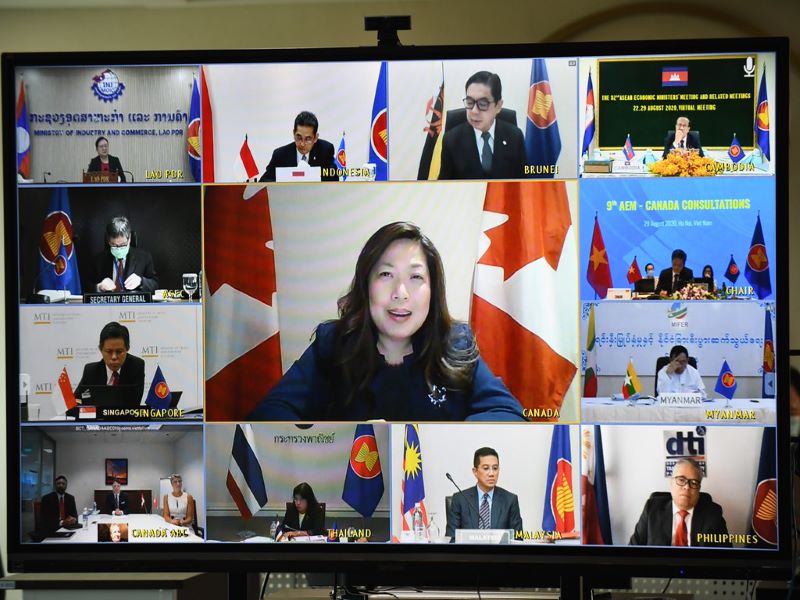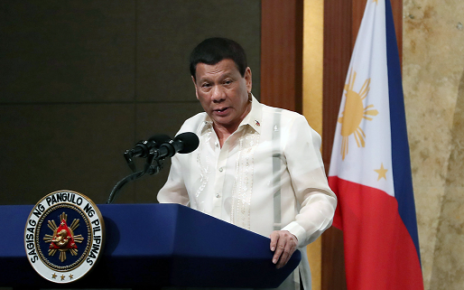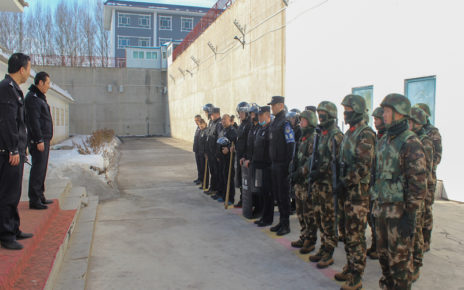This Special Report accompanies Canada, NATO, and the Indo Pacific, funded by the Department of National Defence MINDS Program.
Canada needs a cohesive Indo-Pacific Strategy if it isn’t to be left behind in what is now the geopolitical centre of the world. A need for a strategy arrives at a moment of emergent global multipolarity that is growing in accommodation towards China as an economic and military power rivalling the United States. As the risk of the US-China clash increases, middle powers must reflect upon and develop their diplomatic, security, and economic relations with both countries, and one another. For Canada, this means identifying, defining, and communicating its values and interests in the Indo-Pacific to allies and orienting itself around the protection and development of agreements and institutions capable of facilitating shared regional and global public good.
A strategy would facilitate Canada’s diplomatic engagements in the Indo-Pacific by clarifying its intentions and the range of its commitments to its partners. The throne speech in November 2021, was an important step in signalling Canada’s intent to respond to the challenges posed by China and to improve its diplomatic relations in the Indo-Pacific and the Arctic. It also represents the onset of an Indo-Pacific policy to Canada’s closest ally, the US, which Conservative leader Erin O’Toole believes is moving ahead without Canada. Canada should be concerned about the actions of the US in the Indo-Pacific over fears of increasing conflict in flashpoints in the South China Sea or Cross-Strait relations between Taiwan and China. However, an incoherent Indo-Pacific strategy may risk being implicated in conflict with China and requires that a Canadian strategy is unique to its needs and not interchangeable with those advanced by other countries. The consequences of failing to sufficiently communicate a strategy that encompasses Canada’s interests in the region may result in its further entanglement into further US-China conflict.
Insecurity caused by the threat of great-power conflict is especially rampant among middle powers and has prompted a response by the Us and China, pledging closer cooperation and negating suspicion of another Cold War. Global insecurity is, in part, because of China’s rapid ascent and use of wolf warrior diplomacy, which describes aggressive behaviour by Chinese diplomats and foreign representation to advance the national interests of the nation, bringing it into conflict with other countries. In the South China Sea, the development of artificial islands and the imposition of the nine-dash line has brought China into conflict with the Association of Southeast Asian Nations (ASEAN); a 10-member group comprised of Indonesia, the Philippines, Vietnam, Myanmar, Cambodia, Singapore, Laos, Thailand, Malaysia, and Brunei. This dynamic has recently amounted to conflict with the Philippines on November 18, wherein China’s coast guard assaulted Philippine supply boats with water cannons in disputed water in the Spratley Islands. Days later at the ASEAN leaders summit on November 22nd, Xi Jinping attempted to reassure ASEAN members that it would not seek hegemony and continue dialogue with the grouping to prevent future conflict. ASEAN has, however, remained skeptical of President Xi’s statements and has continued its calls for China to end its activity around the islands. Dually, China’s aggression and rapid ascent have prompted a strong reaction from the US, which has shored up its defences through a renewal of its relationship with the UK through the New Atlantic Charter. More recently, the US has advanced the notion of democracies under attack by authoritarianism through a Summit for Democracies that has proven deeply divisive amongst Southeast Asian nations.
Challenges Facing Canada in the Indo-Pacific
Forums like the Summit for Democracies do little to engage Indo-Pacific nations on the security and economic priorities in the region. Fortunately, Canada is already an active participant in the major forums in the Indo-Pacific and can leverage its role as a founder of Asia Pacific Economic Cooperation (APEC) and membership in regional trade agreements, such as the Comprehensive and Trans-Pacific Partnership (CPTPP) — one of the largest free trade agreements in the world. These groupings advance Canada’s interest by improving its maneuverability to engage Indo-Pacific nations on governance and economic issues that matter to them which exist outside of great-power competition. However, Canada’s role in these forums may not suffice under the context of the Indo-Pacific construct, and its absence in emergent groupings such as the Quadrilateral Security Dialogue (Quad) or the trilateral partnership between Australia, the United Kingdom, and the United States (AUKUS) may relocate it to the sidelines in shaping regional order. Preventing such conflict and creating pathways for continued middle-power success will require a dual-pronged approach that many Indo-Pacific nations have initiated that balances their security and economic interests
Canada’s obligations to the North Atlantic Treaty Organization (NATO) and the North American Aerospace Defense Command (NORAD) occupy much of its attention and could explain its lacking military presence in the Indo-Pacific. Although a member of the Five-Eyes intelligence alliance with the US, UK, Australia, and New Zealand; Canada has been excluded from some of the region’s emerging strategic forums. This exclusion was made apparent earlier in 2020 with the re-emergence of the Quad; a grouping consisting of Japan, the US, Australia, and India largely passed as an anti-China coalition; and its “plus” variations with New Zealand, The Republic of South Korea, and Vietnam. Further, the unveiling of the AUKUS pact composed of Australia, the United Kingdom, and the United States also demonstrated the extent of Canada’s exclusion. Resulting confusion about Canada’s absence in AUKUS and whether it was considered a prospective participant was questioned and drew criticism from the opposition that Canada was becoming an unreliable partner and that the US and other partners were preparing to act without it.
Similar concerns arise regarding Canada’s economic presence and ability to grow its trade relationships with Indo-Pacific nations. News of the AUKUS pact amidst discussions about a potential trade agreement between Canada, Australia, New Zealand, and the United Kingdom (CANZUK) added pressure on the Canadian government to stymie criticism that it was trailing behind. By contrast, New Zealand – the other member of the Five Eyes not in AUKUS – is focusing on starting its initiatives, like the Digital Economy Partnership Agreement with Chile and Singapore which is set to become the first digital-only free trade agreement in the world. Behind some of its closest allies in the Indo-Pacific, Canada has since shifted its attention to Southeast Asia in furtherance of its diversification strategy. Increasing cooperation with the Association of Southeast Asian nations would represent a positive sign that Canada has strong diplomatic relations with other Indo-Pacific nations and can leverage its relationships with them when necessary.
The Canada-ASEAN Free Trade Agreement
ASEAN is the world’s fifth-largest economy and represents 650 million people. Created in 1967 to staunch the spread of communism and promote stability in Southeast Asia, it would then expand through several agreements beginning in the 1970s with the Treaty of Amity and Cooperation and the 2007 ASEAN Charter. Taken together, ASEAN has developed into a grouping that emphasizes non-interference in the affairs of its member countries and the principle of ASEAN Centrality that focuses on keeping Southeast Asia governed by Southeast Asian nations. However, ASEAN is struggling to maintain its relevance in the Indo-Pacific because of the increasing presence of external powers in Southeast Asia. Confronted by the US-China competition, ASEAN members are tasked with balancing their economic interests with China and the security necessities provided by the US.
The Outlook on the Indo-Pacific (AOIP) released in 2019 is the groups’ response to the incursion of foreign powers in the region and functions as a normative statement that reframes ASEAN centrality over the Indo-Pacific by promoting inclusivity and non-interference. Caught between two great powers, ASEAN is continuing to advance the AOIP with interested countries in a process that has produced the Canada-ASEAN Free Trade Agreement. ASEAN has a long history of advancing its economic strategy through ASEAN+1 free trade agreements. News of Canada-ASEAN Free Trade Agreement negotiations was received positively by observes calling for more involvement of Canada in the Indo-Pacific after being absent in both the Quad and the AUKUS trilateral partnership. A free trade agreement is also welcomed in Southeast Asia and was discussed 10th ASEAN Economic Ministers-Canada Consultation, highlighting the value of two-way merchandise trade and Canadian Foreign Direct Investment in Canada, which has increased yearly by 11.7%.
The arrival of a Canada-ASEAN free trade agreement creates an opportunity for both partners to boost their diversification efforts from the US and China. Diversification from the great powers and offsetting their inference in internal and regional affairs of both Canada and ASEAN is important when considering their impact. Most notable is China’s role in preventing ASEAN from publishing a joint communique for the first time in its history in 2012, and nearly again in 2016 by capitalizing on its one-sided investment and trading relationship with then-chair, Cambodia. Canada too is susceptible to the consequences of the US-China conflict and will continue finding itself in difficult situations where outcomes of the conflict do not serve its interests or values. Caught between great powers and faced with the task of evaluating its relations with both the US and China Despite doubts in its leadership, Canada will look inwards towards other ascending and middle powers. An inward shift amongst like-minded middle powers like Japan, Taiwan, and the ASEAN regional body, demonstrates the extent that middle-powers are adapting to the threat of the US-China conflict. It remains, however, whether middle-power cooperation is capable of sufficiently building diplomatic relations by actionable policies to influence the governance of the Indo-Pacific.
Towards Neo-Middle Power Diplomacy
These shifts in the Indo-Pacific political and economic landscape represent the continuation of neo-middle power diplomacy defined by an effort to shape regional and global order through an alignment of capabilities by focusing on issue-based advocacy, such as the global distribution of public goods. This theory manifests in the Indo-Pacific through the Comprehensive Transpacific Partnership and the Regional Comprehensive Economic Partnership. The importance of these trade agreements for demonstrating neo-middle power diplomacy is two-fold. The first is in demonstrating the ability of middle-powers in the Asia-Pacific to advance the CPTPP without the US, following its withdrawal under the Trump administration. Comparatively, the signing of RCEP demonstrated the ability of Southeast Asian nations to identify and determine the terms for engagement with China and contribute to the regional diplomatic architecture of the Indo-Pacific with other middle powers. Together, the agreements constitute the world’s largest and most comprehensive trade agreements and showcase the capabilities of middle powers to innovate trade relations through collaboration and the ability of the ascendant ASEAN bloc to determine the terms for engagement with the US and China.
Canada can learn how to navigate and develop an Indo-Pacific strategy from its contemporaries. Like many states that have adopted an Indo-Pacific strategy such as France, Germany, the United Kingdom, and ASEAN, Canada too can carve out a space for itself to engage and defend its interests. According to Dr. Stephen Nagy, a senior associate professor at the International Christian University in Tokyo, Canada’s contributions may include a focus on coordination of supply chain management and trade restrictions, boosting supply chain resilience, multilateral trade promotion, and utilizing non-traditional methods of security cooperation on issues like climate change and trafficking. Adopter states of the Indo-Pacific construct have advanced their strategies unique to their values on these issues. By identifying Canada’s strengths and capabilities, Canada can carve out a space for engagement. Further, by adopting a strategy that learns from those of its contemporaries, Canada may prime itself for future coordination with its closest allies in the region
Conclusion
Canada has slowly demonstrated its Indo-Pacific strategy to its allies rather than announcing it outright. Its attempts at a CANZUK alliance and advancing its presence in the Indo-Pacific through APEC and the CPTPP are positive signs that Canada is attempting to maintain its maneuverability in the region. FTA negotiations with ASEAN further demonstrate that Canada is looking inward with other middle-powers to offset the influence of great-power competition. These, however, should not overshadow its absence in consultations concerning the AUKUS pact or the uncertainty surrounding the Canada, Australia, New Zealand, United Kingdom trade negotiations (CANZUK) (perhaps use the longer form to avoid confusion for the general public). Developing relations with Southeast Asia cannot substitute Canada’s relationship with the countries in these groups. Neither is it likely to alter the influence of China in Southeast Asia. Canada may only deescalate great-power rivalry in the Indo-Pacific by collaboration with Asian nations and its longstanding allies in the region. These allies, however, need more clarity about Canada’s intentions in the Indo-Pacific and have begun moving ahead without Canada’s input. As the geopolitical landscape becomes increasingly dominated by the Indo-Pacific construct, Canada needs to define for its allies what exactly its values are and how it intends to act on them from now on.
Photo: Economic Ministers from the ten ASEAN Member States and Canada (“the Ministers”) met [virtually] on 29 August 2020 for the 9th ASEAN Economic Ministers (AEM) – Canada Consultations. (2020), By the Association of Southeast Asian Nations. Public Domain.
Disclaimer: Any views or opinions expressed in articles are solely those of the authors and do not necessarily represent the views of the NATO Association of Canada.




